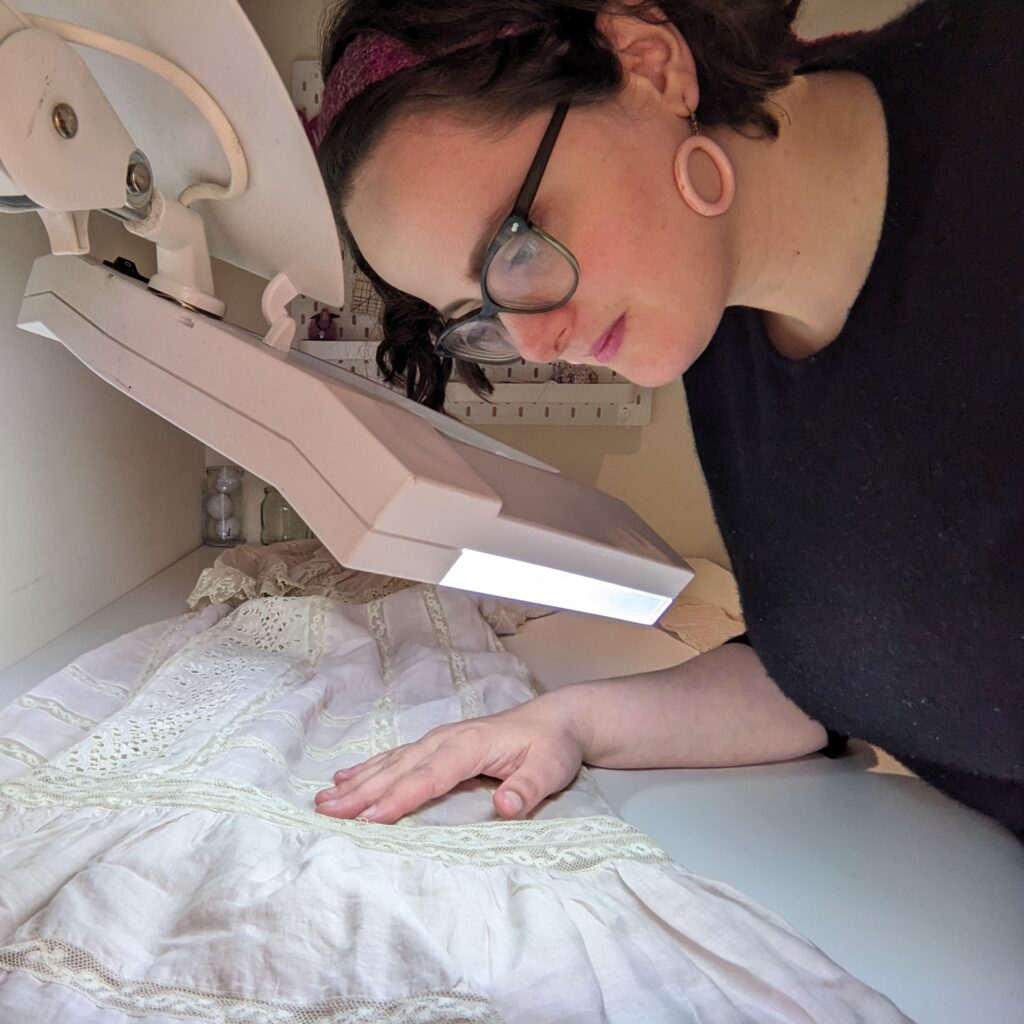Textile conservators are professionals who care for, treat, and preserve important textile objects. These objects may include a family heirloom christening gown, a famous wrestler’s ring attire, or a fragment from an archaeological dig. These textiles may be ancient or modern, in tatters or pristine, priceless or only valued by their owners.
Textile conservators may work for museums, heritage organizations, universities, private clients, or for anyone else who requires their services. Many textile conservators have advanced degrees in the subject and several years of practical training. Conservators learn how textiles are constructed, to analyse damaged objects, repair condition issues, and prevent further deterioration. They study art history, organic chemistry, archaeology, museum studies, and practical crafting skills in order to protect these objects.

One of the most important tenets of textile conservation is the ethical treatment of objects. We try to preserve the “essential nature of an object” and make our repairs as unobtrusive and removable as possible. I’ll expand on what this means in a later post.
My intention with this blog is to teach crafters aspects of textile conservation to aid their making. Knowing the different properties of fibres can make spinning yarn more pleasurable. Learning about ways to clean handmade garments will make them last longer. Comprehending how light fades dyes can help protect objects from damage. By understanding more about textiles, I hope that my readers will be able to create the textiles of their dreams and care for them in the long run.
However, this is not a how to be a home textile conservator guide. Working with historic, damaged, or valuable textiles is a real skill that requires training and experience. “Repairs” by amateurs can be very dangerous to important textiles and a major cause of further damage. Feel free to darn your hand knit socks, but leave your great-grandmother’s wedding dress to the professionals.
